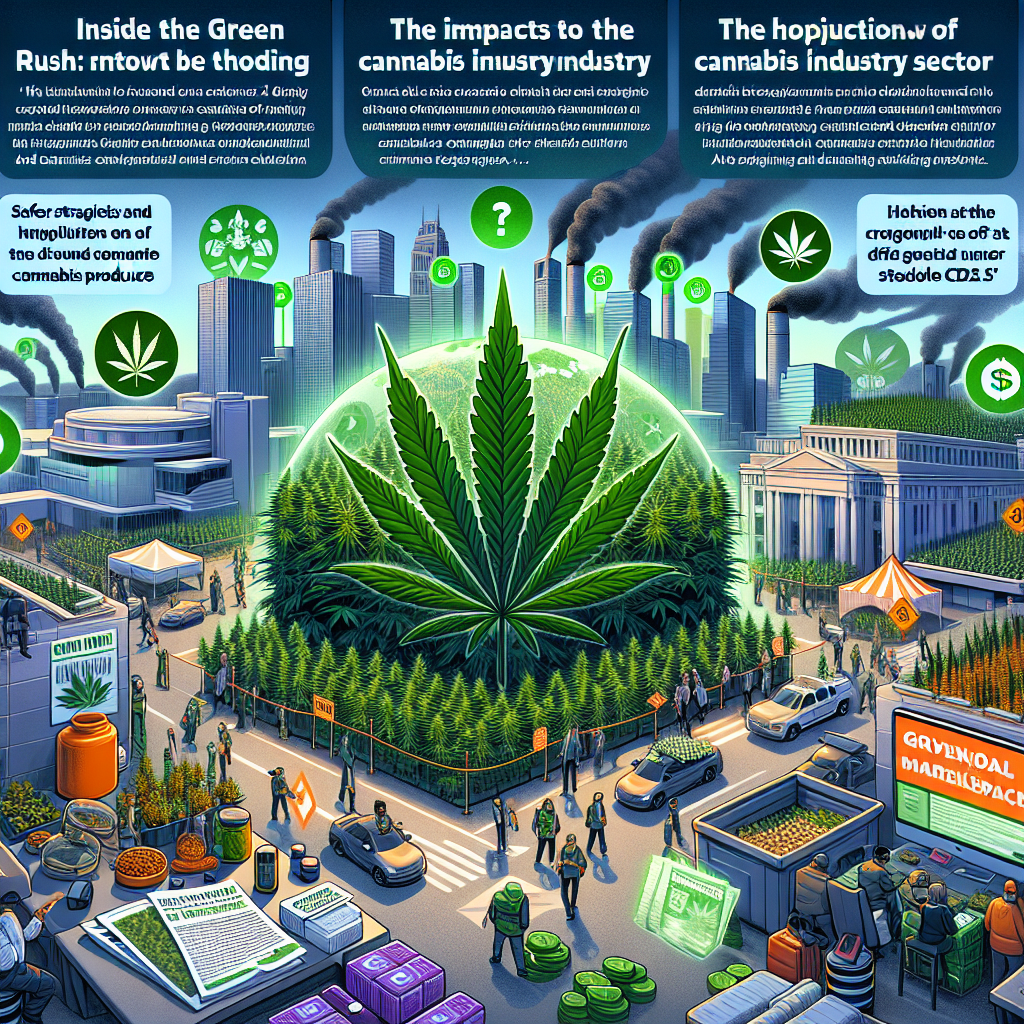
The Green Rush: Cannabis in 2024
Inside the Green Rush: The Impacts and Future of Cannabis Industry in 2024
As we enter the year 2024, the cannabis industry is at a crossroads facing both significant challenges and potential monumental shifts in regulations and market dynamics. This industry, which once operated in the shadows, has emerged into a multi-billion-dollar global marketplace, with promises of further expansion and innovation. However, it also grapples with growing pains, legal hurdles, and safety concerns that stakeholders must navigate.
Reshaping Regulation
The U.S. cannabis market sits on the brink of a regulatory revolution, with the impending rescheduling of the drug likely to occur this year. Cannabis may move from Schedule 1 to Schedule 3 of the Controlled Substances Act (CSA), as recommended by the Department of Health and Human Services. This shift will hold vast implications for the industry, potentially easing tax burdens, accelerating research, and opening new markets.
The rescheduling odyssey, initiated by the Biden administration back in 2022, is anticipated to culminate in pivotal changes, although not without expected legal challenges. The possibility of tax relief could breathe new life into the industry, particularly for retailers who operate under the onerous Section 280E of the federal tax code; prohibiting them from deducting many normal business expenses.
A Green Light for Safety Strategies
Focusing on worker safety, federal OSHA officials have recently discussed safety strategies to protect cannabis industry workers, marking an essential step in industry maturation. The safety protocols in this industry are increasingly crucial, following cases of cannabis-related occupational asthma and other health incidents. The aim is to improve health and safety standards with better detection protocols, referrals, and research, ensuring a safer working environment for the industry’s workforce.
State-Level Progressions and Setbacks
While federal developments unfold, states are experiencing their own cannabis industry evolution. Illinois lawmakers, for instance, are seeking to ban delta-8 THC and other psychoactive hemp products, citing concerns over safety and regulatory compliance. This move forms part of a broader crackdown on unregulated cannabis products, spotlighting the tensions between burgeoning hemp sectors and established marijuana markets.
Tightening the reins on hemp-derived substances like delta-8, states are sending a clear message: The cannabis market must be safe and regulated to protect consumers and maintain industry integrity. Entrepreneurs operating within the delta-8 space are feeling the heat, as proposed legislation could levy hefty fines for non-compliance, reshaping the competitive landscape.
Federal Review and Banking Reforms Hopes
The cannabis industry’s growth is not without its financial obstacles. As federal review moves forward, there is a significant focus on the SAFE Banking Act and its long-awaited promise of accessible financial services for cannabis businesses. The banking reform, once thought nigh, now faces an uncertain future with a new administration and continued deadlock in Congress.
Looking Ahead
Analysts and industry experts project a year colored by the potential federal rescheduling, possible tax breaks, and striving for a legally compliant, safer, and more inclusive cannabis market. Businesses and investors are closely monitoring these developments, knowing that 2024 may very well set the trajectory for the industry’s future, signaling either a continued ‘Green Rush’ or a plateau in this high-stakes market.
The cannabis industry, now more than ever, finds itself in a transformative era where the directions chosen and the strategies implemented could redefine the drug’s role in society and ultimately shape its commercial destiny.
References:

